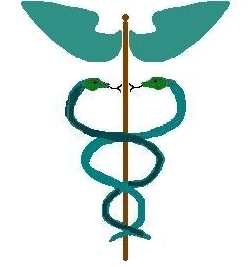I’ve come across (somewhat) recently four ways storytelling is being used in healthcare. Here are some perspectives on those approaches:
-
- Patient stories are widely available on the Internet but are
 not always trustworthy: In a guest post on e-patients.net, Lisa Gualtieri, PhD, notes three kinds of patient stories that can be found on the Internet:
not always trustworthy: In a guest post on e-patients.net, Lisa Gualtieri, PhD, notes three kinds of patient stories that can be found on the Internet:
- unedited user-generated stories in online health communities and patient blogs;
- professionally edited or “as told to” support stories;
- and promotional stories.
- Patient stories are widely available on the Internet but are
But, Gualtieri cautions, “Unless you know the author of a story, you never know for sure if it is true. … patients want to believe stories because they are desperate for information. Ultimately, most stories are from real people sharing authentic experiences, and the best way to weed out the others is to use common sense, be skeptical, check with a trusted medical professional …”
-
- Storytelling can promote health literacy:
In The Online Journal of Issues in Nursing, Vivian Day discusses “the use of storytelling to present healthcare information in an easily understandable and captivating manner.” Citing the US Department of Health and Human Services’s definition of health literacy — “the degree to which individuals have the capacity to obtain, process, and understand basic health information and services needed to make appropriate health decisions” — Day notes that more and more health information is out there, but it’s not always easy for the average person to interpret it. Storytelling provides an avenue through which an individual can “takes a new event, applies its meaning to past experiences, and visualizes future possibilities.” It “allows hearers to reflect on the story told and actively apply it to their life situation,” Day writes. The author lists several ways of using storytelling toward health literacy, such as having patients create books about their specific health problem, encouraging patients to tell stories in support groups, and sharing stories about loved ones who’ve learned that someone they care about is terminally ill. Day writes:
Hearing the stories of others, reflecting on these stories, and determining how these stories can be applicable to one’s life may be more beneficial than simply reading written information or watching an educational video.
- Narratives from physicians’ clinical experience transmit socially embedded knowledge, and webinars are an effective venue for those narratives: Katherine D. Ellington created American Medical Student Association (AMSA) National Book Discussion Webinars. A diverse group of physicians have discussed their books, writing pursuits, work experiences, and lives. The AMSA National Book Discussion Webinars offer a unique online experience between physician-authors and medical students to encourage reading beyond the medical school curriculum, both for professional development and for personal enrichment.” A significant part of the content conveyed in these webinars can be characterized using the words of one of the commenters to Ellington’s blog entry, citing a book called Expertise in Nursing Practice: “[N]arratives from clinical experience transmit socially embedded knowledge,” to which Ellington responded by also quoting the cited chapter: “[T]he function of narrative in a practice in revealing and creating social memory, skilled ethical comportment and the role of first-person narrative in community and culture building.”
- Patient records are more than just that; they are the patient’s story.
Regina Holliday, a DC-based patient-rights arts advocate, writes, speaks, and creates art depicting her family’s nightmare journey through the medical system during her late husband’s cancer care. Her large mural titled “73 cents” became part of the national healthcare debate and was covered by the media. Holliday consistently uses story to illustrate the need for clarity and transparency in medical records. She writes poignantly about story here An excerpt, in which she likens a patient’s medical record to his or her story (emphasis added):I now sit in meetings for hours and watch power point lectures about electronic medical records. I listen to people dissect HIPPA regulations and incentive time tables. I hear arguments comparing ICD-9 code to ICD-10. And sadly, I hear many people tell me that patients should never see the entire medical record. … For too long the medical record has been considered a billing document or a legal document: property of the physician or institution, instead of what it is, the story of the patient.
